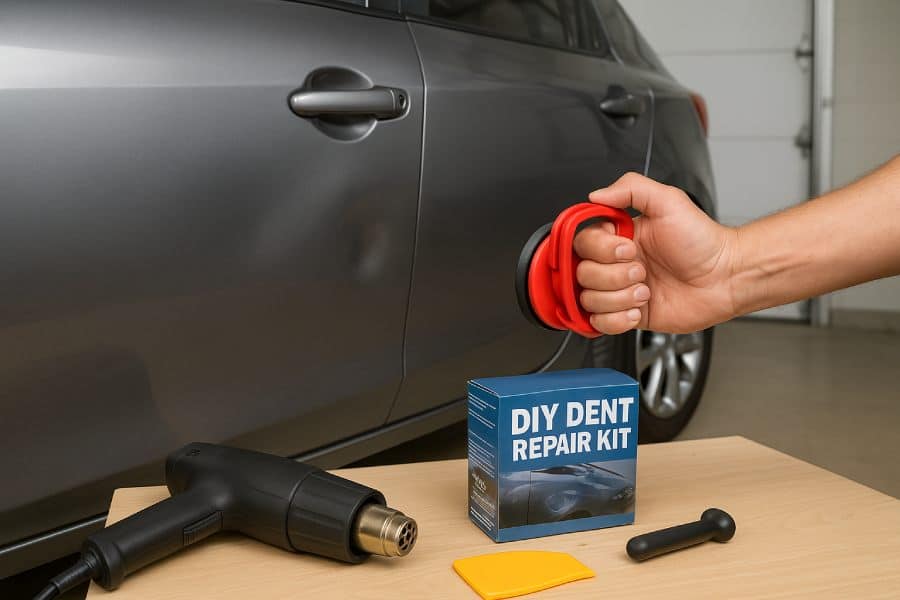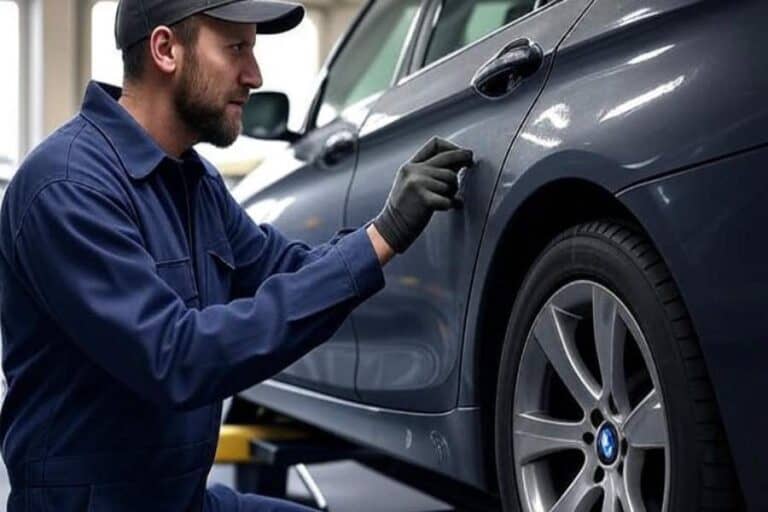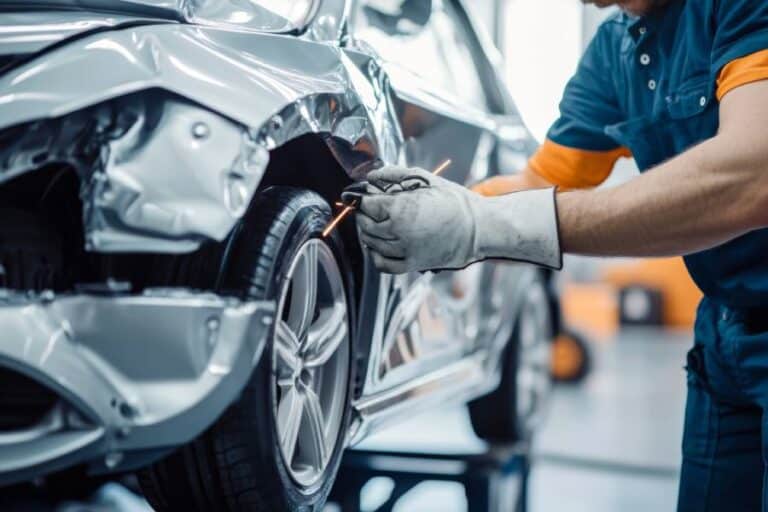6 Cost-Effective Ways to Repair Minor Car Dents Quickly
Even a minor dent can significantly impact your car’s aesthetics and its resale price. Thankfully, you don’t have to spend a fortune at an auto body shop to bring back your vehicle’s original look. Dents can occur from various sources like hail, unfortunate parking incidents, or wandering shopping carts. Luckily, there are several economical methods to address small dents swiftly and effectively. Here are six reliable strategies that balance cost, ease, and efficiency.
1. Paintless Dent Repair (PDR)
Understanding Paintless Dent Repair
Paintless Dent Repair (PDR) is a quick, affordable method for fixing minor dents by gently reshaping the metal from behind the panel without repainting. Ideal for small to medium dents with intact paint, it eliminates the need for sanding or fillers, allowing most repairs to be completed in just a few hours.
Benefits of PDR
- Expense Reduction: With the absence of paint or filler, both labor costs and material usage are greatly minimized.
- Fast Repair: The majority of small dents can be fixed within a single day or even sooner.
- Value Retention: The original factory paint is preserved, ensuring the vehicle’s resale value remains intact.

When to Avoid PDR
PDR won’t work well when the paint is damaged with cracks or the metal has significant creases. In these situations, conventional repair techniques might be required.
2. Using DIY Dent Repair Kits
a. How DIY Kits Work
DIY dent repair kits are readily available at auto parts stores and online, usually including suction cups, glue guns, and pulling tabs. They work well for minor, shallow dents that don’t damage the paint, though they’re less precise than professional tools.
Pros of DIY Kits
- Reasonably priced: Kits usually range from $20 to $50.
- User-Friendly: Tailored for novices, featuring clear, sequential guidance.
- Handy: Repairs can take place right in your driveway or garage.
Common Mistakes to Avoid
- Applying excessive force could result in the metal being elongated.
- Applying too much heat may harm the paint.
- Disregarding the guidelines provided by the manufacturer.
b. Enhancing Results with Proper Technique
To achieve optimal results, ensure the surface is thoroughly cleaned prior to sticking on the suction or glue tabs. Take your time and apply consistent pressure to prevent any new dents or bumps from forming.
Safety Tips for DIY Dent Repairs
- Always use gloves to protect your hands from burns caused by hot glue.
- Store tools out of children’s reach.
- Utilize products in a space that has good airflow to prevent breathing in any fumes.

3. Boiling Water Technique
A quick and simple way to fix dents in plastic bumpers is by using boiling water. Pour the hot water over the dented area to soften the plastic, then reach behind the panel and gently push the dent out. Rinse the area with cold water immediately to help the surface retain its shape.
This method works because plastic expands with heat and contracts as it cools, making reshaping easier. It’s cost-free, requires no tools, and delivers fast results. However, it’s only effective on plastic panels and may not work well on older vehicles with brittle materials.
4. Hair Dryer and Compressed Air Technique
Using Temperature Fluctuation to Your Advantage
Like the boiling water technique, this method relies on temperature fluctuations to regain the panel’s original form. By applying heat to the dented section using a hair dryer and then quickly cooling it with compressed air, the rapid change in temperature can help the dent to “pop out.”
Step-by-Step Process
- Use a hair dryer to warm the dent for approximately 30 seconds.
- Quickly apply compressed air to the area.
- The metal shrinks due to the cooling, which allows the dent to pop out.
Benefits of the Method
- Affordable: Needs equipment typically available around the house.
- Gentle on Surfaces: When executed properly, it leaves paint and finishes untouched.
- Eco-Friendly: Free from chemicals and additives.

Tips for Optimal Results
- Before starting, ensure the area is clean. Keep the hair dryer at least six inches away from the surface to protect the paint.
- Precautions: Avoid excessive heat to prevent paint blistering, never use open flames or high-powered heat tools, and perform the repair in a cool, shaded area for better control.
5. Professional Mobile Dent Repair Services
Convenience Meets Affordability
If tackling DIY approaches feels overwhelming, consider professional mobile dent repair as a great compromise between high quality and affordability. These skilled technicians will come to your home or office, utilizing top-notch PDR equipment to fix your vehicle.
Why Mobile Services Are Growing Popular
- Convenience: You won’t have to travel to a garage or be without your vehicle for an extended period.
- Cost-effective: Expenses are reduced because mobile operators have low overhead.
Expert Outcomes: Technicians guarantee accuracy without the need for touch-ups.
6. Using Suction Cups or Plungers

The Household Alternative
You might be surprised, but a standard plunger can occasionally remedy small to medium-sized dents, particularly on flat surfaces. By generating suction to draw the dent out, it’s often possible to restore the area with little effort.
Step-by-Step Process
- Dampen the plunger to ensure a secure fit.
- Apply strong pressure to the indented section.
- Exert a consistent, gentle pull in an outward direction.
Advantages
- Essentially Costless: Just a regular plunger will do the trick.
- Fast and Easy: Only requires a couple of minutes.
- No Worries About Paint Damage: Provided that sharp instruments are avoided.
When It Works Best
This technique works best for large, shallow dents found on doors or fenders.
Drawbacks of Plunger Repairs
- Might not fully resolve significant or pronounced dents.
- Achieving optimal results often necessitates several tries.
- Not useful for addressing sharp or edged dents.

Choosing the Right Dent Repair Method
Small dents don’t have to mean big expenses. From DIY kits and home remedies to professional mobile services, there are affordable options for every budget. Minor, shallow dents work best with paintless dent repair or suction methods, while heat techniques suit plastic parts. DIY repairs save money, and experts save time. To prevent future dents, park safely, use hail protection, and fix damage promptly to prevent rust. With the right approach, you can keep your car looking sharp and maintain its value without overspending.







